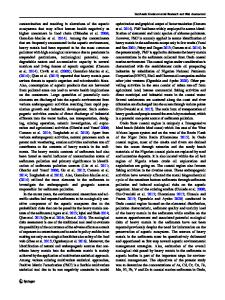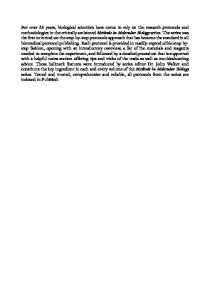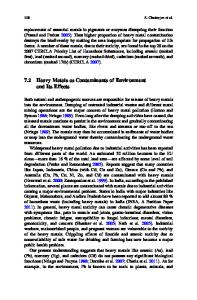Quantitative source identification and apportionment of heavy metals under two different land use types: comparison of t
- PDF / 1,038,685 Bytes
- 15 Pages / 595.276 x 790.866 pts Page_size
- 48 Downloads / 289 Views
RESEARCH ARTICLE
Quantitative source identification and apportionment of heavy metals under two different land use types: comparison of two receptor models APCS-MLR and PMF Min Zhang 1 & Xueping Wang 3 & Chang Liu 1 & Jiayu Lu 1 & Yuhong Qin 1 & Yunkan Mo 1 & Pengjun Xiao 1 & Ying Liu 1,2 Received: 4 May 2020 / Accepted: 20 July 2020 # Springer-Verlag GmbH Germany, part of Springer Nature 2020
Abstract At present, many researchers are increasingly aware of the importance of using models to identify heavy metal (HM) pollution sources. However, on the performance and application of different source identification models to HMs under different land use types had been studied little. In this study, comparison of absolute principal component scores-multiple linear regression (APCSMLR) and positive matrix factorization (PMF) models and their application characteristics in identifying pollution sources were carried out by using 11 HMs in Zhongwei City farmland and Shizuishan industrial park, Ningxia. The results indicated that HM pollution in farmland mainly came from pesticides, fertilizers, and deposition of the Yellow River, while the pollution in industrial park mainly originated from atmospheric deposition and various industrial productions. The APCS-MLR model had the problem of less identification sources and the difficulty to explain the complex pollution, while the PMF model not only identified more pollution sources, but also distinguished heavy metal–related sources for two different land use types and different industrial production conditions. It is of great significance the formulation of agricultural-related pesticides’ and chemical fertilizers’ rational use and various industrial production–related raw materials put in and emission control strategies. Keywords Source apportionment of HMs . Comparison study of APCS-MLR and PMF . Ningxia . Two different land use types
Introduction With the urbanization and industrialization brought about by the rapid development of social economy (Li et al. 2018; Shi et al. 2017), the pollution of heavy metals (HMs) in soil had gradually attracted the attention of the global public. Its main sources were human activities such as agricultural fertilizers,
Responsible editor: Marcus Schulz Electronic supplementary material The online version of this article (https://doi.org/10.1007/s11356-020-10234-z) contains supplementary material, which is available to authorized users. * Ying Liu [email protected] 1
College of Life and Environmental Sciences, Minzu University of China, Beijing 100081, China
2
Beijing Engineering Research Center of Food Environment and Public Health, Minzu University of China, Beijing 100081, China
3
Guangxi Key Laboratory of Marine Disaster in the Beibu Gulf, Beibu Gulf University, Qinzhou 535011, China
industrial manufacturing, and vehicle exhaust (Chen et al. 2016; Huang et al. 2015). In the process of human transformation and utilization of land for production and construction, various land use types with different utilization directions and
Data Loading...











